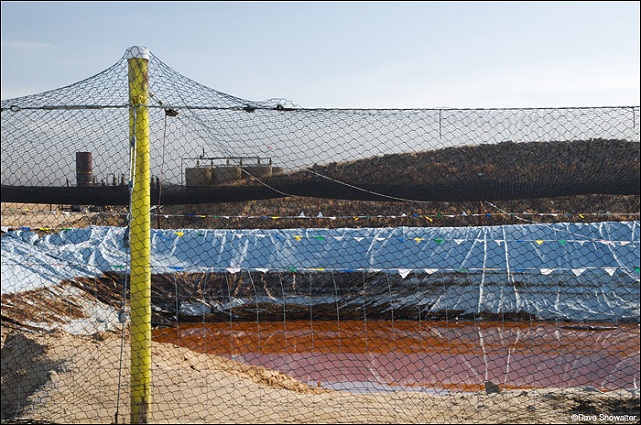As you may have noticed at the pump recently, gasoline prices have fallen by 35% over the last few months, from just below $4.00 per gallon down to around $2.60, a five-year low. During this same time period, the price of petroleum, the raw material from which gasoline is made, has dropped from $110 to $70 per barrel. A quick calculation shows, unsurprisingly, that the percent reduction in the price of gasoline is nearly identical to the percentage drop in the price of petroleum. In order to understand why gasoline prices have dropped, we need to examine why petroleum prices have dropped.
Petroleum (or oil) is a global commodity, and its price is extremely sensitive to the balance of supply and demand. Back in 2011, global supply and demand for petroleum were roughly in balance, at approximately 91 million barrels a day (MMbbl/d) each. While these conditions existed, the price for a barrel of oil hovered in a narrow range near to $110 per barrel.
The breakdown of the approximate world oil supply from 2011 is shown below:
| Production (MMbbl/d) | Percentage | |
| United States | 8 | 9% |
| Saudi Arabia | 10 | 11% |
| Rest of OPEC | 20 | 22% |
| All Others | 53 | 58% |
| Total | 91 |
The United States uses about 19 MMbbl/d of petroleum, so back in 2011 we were producing 8 MMbbl/d (42%) of this demand and importing the other 11 (58%).
Since 2011, petroleum production in the U.S. has increased from 8 to 11 MMbbl/d, an increase of more than 30%. Since our use remains at about 19 MMbbl/d of oil, our import and export percentages have flip-flopped, with domestic supply at 58% and imports at 42%.
The increased petroleum production in the U.S. has allowed us to supplant Saudi Arabia as the world’s largest supplier of oil, and our operations have increased the global petroleum supply by about 3%, from 91 to 94 MMbbl/d. A three percent increase may not sound like much, but as I mentioned above, commodity prices are strongly influenced by the supply and demand balance. Therefore, even this seemingly small increase in supply has driven the price of a barrel of oil down from $110 to $70 per barrel.
The reason that the U.S. has been able to dramatically increase its oil production can be summarized in one word: fracking. In case you have been living in a hole (pun intended) for the past few years, fracking is the process of shattering underground rock with a high-pressure mix of water, sand, and toxic chemicals to liberate oil and gas trapped within. Since these rock formations are usually made of shale, the resulting oil is often called “shale oil.” For the past several years, thousands and thousands of fracking wells have been drilled all over the country, particularly in North Dakota, Pennsylvania, Oklahoma, and Texas. Here in North Carolina, the General Assembly is rapidly pushing through legislation to allow fracking to begin here as well.
Financially speaking, an increase of 3 million barrels a day of oil production is a really, really big deal, in that it results in an increase in revenue to the U.S. oil industry of 100 trillion dollars a year! However, to really understand the economic and political implications of the increase in U.S. petroleum production, we need to discuss why I underlined the word revenue above.
While revenue is nice, what companies really need is profit, which is revenue minus expenses. Unfortunately for U.S. oil companies, fracking for shale oil is a very expensive enterprise. It costs about $70-75 to produce a barrel of oil from a fracking operation, compared to less than $40 for a traditional oil well. As you can imagine, when the price of oil was $110 per barrel, U.S. frackers were quite pleased to be making a profit of $40 per barrel. So pleased, it turns out, that they got overzealous, drilled too many wells, and the resulting over-supply drove the price way down.
Now that the price of oil has dropped to $70 per barrel, profits from fracking operations have dropped to zero. Given that drilling companies borrow huge sums of money to drill these wells, and that the banks who loaned the money want to be paid back, this situation is rather problematic to say the least.
To alleviate their difficulties, U.S. oil companies want Saudi Arabia and the rest of OPEC to cut back their own production to reduce supply and drive the price of oil back up. Since the Saudis have traditional rather than fracking wells, they still make a healthy profit at $70 per barrel. For the moment, they have rebuffed requests from the U.S., as have all of the world’s other noteworthy oil producing nations. I suspect that they are extracting a bit of revenge on U.S. companies as payback for their role in creating the oversupply situation in the first place.
It is unclear how long the Saudis, the big dog at OPEC, will maintain their current stance. If I were a betting man (and I most certainly am), I would bet that somewhere in a smoky room in Riyadh, negotiations are ongoing to determine what concessions the Saudis require before agreeing to cut back their production.
If you live in North Carolina and are hopeful that fracking will not commence there, I’d suggest that you root for the Saudis to remain obstinate. At $70 a barrel for oil, no one will start a new fracking operation, particularly in a zone with modest production potential like the Tar Heel State. So the next time you fill up your tank at $2.60 per gallon, consider pausing for a moment to think about what that really means.
Have a comment or question? Use the interface below or send me an email to commonscience@chapelboro.com. Think that this column includes important points that others should consider? Share this column on Facebook or Twitter. Want more Common Science? Follow me on Twitter on @Commonscience.







Comments on Chapelboro are moderated according to our Community Guidelines